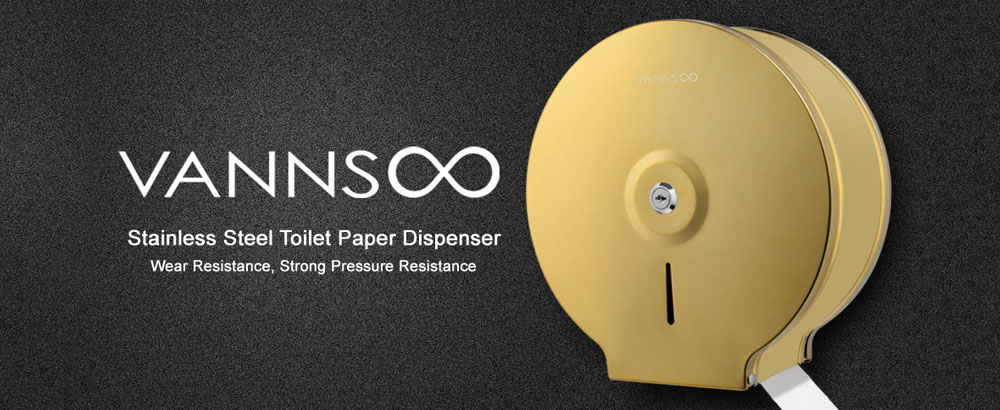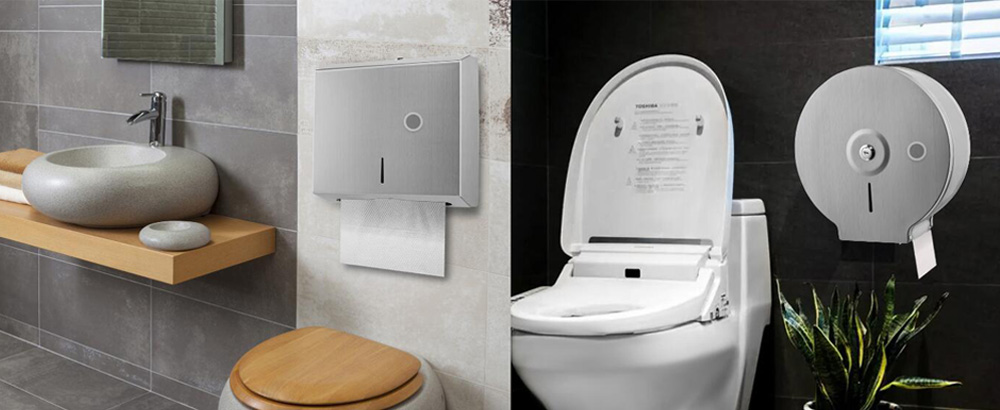What Are the Different Types of Toilet Paper Dispensers?
Feb 27, 2025
Toilet paper dispensers are essential fixtures in both residential and commercial bathrooms. These devices ensure hygiene, convenience, and efficiency in areas that see high traffic. With a range of options available on the market, selecting the right type of toilet paper dispenser can make a significant difference in user experience, maintenance ease, and overall bathroom functionality. Here, we’ll take you through the different types of toilet paper dispensers commonly used today and their specific benefits for commercial and industrial settings.
1. Wall-Mounted Toilet Paper Dispensers
One of the most common and traditional designs is the wall-mounted toilet paper dispenser. These dispensers are fixed securely to the wall, ensuring that the toilet paper roll remains within easy reach for users. Wall-mounted toilet paper dispensers come in various forms, such as single-roll or multi-roll models, and are designed for both residential and commercial use.
For commercial spaces, these dispensers are a popular choice due to their compact design and the ability to store more than one roll, ensuring the dispenser does not run out of paper during high-traffic periods. Toilet paper dispenser manufacturers offer a variety of materials, including plastic, metal, and acrylic, allowing for customization based on the aesthetics and durability required by the space.
Wall-mounted dispensers are ideal for small to medium-sized bathrooms, such as those in offices, schools, or restaurants, where space efficiency is a priority.
2. Free-Standing Toilet Paper Dispensers
Free-standing dispensers, often found in larger bathrooms or restrooms with more flexible layouts, are another popular option. These dispensers do not require installation on the wall, making them easy to move and relocate if necessary. Free-standing models are particularly useful in public spaces such as airports, large office buildings, or hospitals, where ease of access is important.
These dispensers typically feature multiple rolls, allowing for higher capacity and fewer refill interruptions. Free-standing toilet paper dispensers are often designed to accommodate larger rolls, making them suitable for heavy usage areas.
3. Automatic Toilet Paper Dispensers
As technology continues to play a bigger role in everyday products, automatic toilet paper dispensers have become increasingly common, especially in high-end commercial bathrooms. These dispensers operate with sensors that automatically release a set amount of toilet paper when motion is detected, reducing the need for user contact. This feature enhances hygiene by minimizing direct contact with the dispenser.
For commercial toilet paper dispensers, the automatic feature can help to streamline the bathroom experience. Facilities such as luxury hotels, high-traffic offices, and healthcare environments are increasingly adopting these systems to offer an added layer of convenience and cleanliness. Some models even include features such as adjustable paper length and automatic roll change capabilities.
4. High-Capacity Commercial Toilet Paper Dispensers
For environments where heavy usage is common, such as in commercial toilet paper dispensers, high-capacity models are crucial. These dispensers are designed to hold multiple rolls of toilet paper, reducing the frequency of refills. They are particularly useful in large commercial restrooms or facilities with high foot traffic, such as shopping malls, stadiums, and airports.
These dispensers are designed with durability in mind. Many commercial toilet paper dispenser stainless steel models are corrosion-resistant and capable of withstanding frequent use. Stainless steel models are also aesthetically pleasing and can complement the overall design of a commercial restroom while maintaining a high standard of hygiene.
5. Side-by-Side Toilet Paper Dispensers
Another type of commercial toilet paper dispenser is the side-by-side model, which allows two rolls of toilet paper to be stored at once. This configuration ensures that if one roll runs out, the user can easily access the second roll. The design minimizes downtime between refills and provides uninterrupted service in busy locations.
These dispensers are commonly found in office buildings, shopping centers, and other facilities where the convenience of having two rolls available is beneficial. Side-by-side models are often made of stainless steel or high-strength plastic to ensure they can handle frequent usage and are resistant to tampering.
6. Roll and Jumbo Roll Dispensers
In high-traffic commercial bathrooms, jumbo roll toilet paper dispensers are a popular choice. These dispensers are designed to hold larger rolls of toilet paper that last much longer than regular rolls. Jumbo rolls are ideal for large venues or public spaces that experience a significant number of visitors daily.
Jumbo roll dispensers are often made of commercial-grade stainless steel to ensure durability and resistance to wear and tear. They are frequently used in places such as large office buildings, hospitals, and public restrooms, where frequent refills can be a hassle. The increased roll capacity of jumbo roll dispensers means they are a more cost-effective solution over time, reducing the need for constant maintenance.
7. Luxury Toilet Paper Dispensers
In some commercial settings, such as high-end hotels or upscale restaurants, luxury toilet paper dispensers are employed to complement the sophisticated design of the restroom. These dispensers are often crafted from materials like brushed stainless steel or polished chrome, offering a sleek, modern aesthetic that aligns with the overall decor.
Luxury dispensers may feature additional features such as automatic dispensing, quiet operation, and an elegant design. Though typically used in more premium environments, luxury dispensers reflect a growing demand for both functionality and style in public restroom fixtures.
8. Toilet Paper Dispensers for ADA Compliance
For public restrooms that must meet the Americans with Disabilities Act (ADA) standards, specific requirements exist regarding the installation and accessibility of toilet paper dispensers. ADA-compliant dispensers are designed to be within reach for individuals in wheelchairs and those with other physical disabilities, ensuring accessibility and convenience.
Read More

